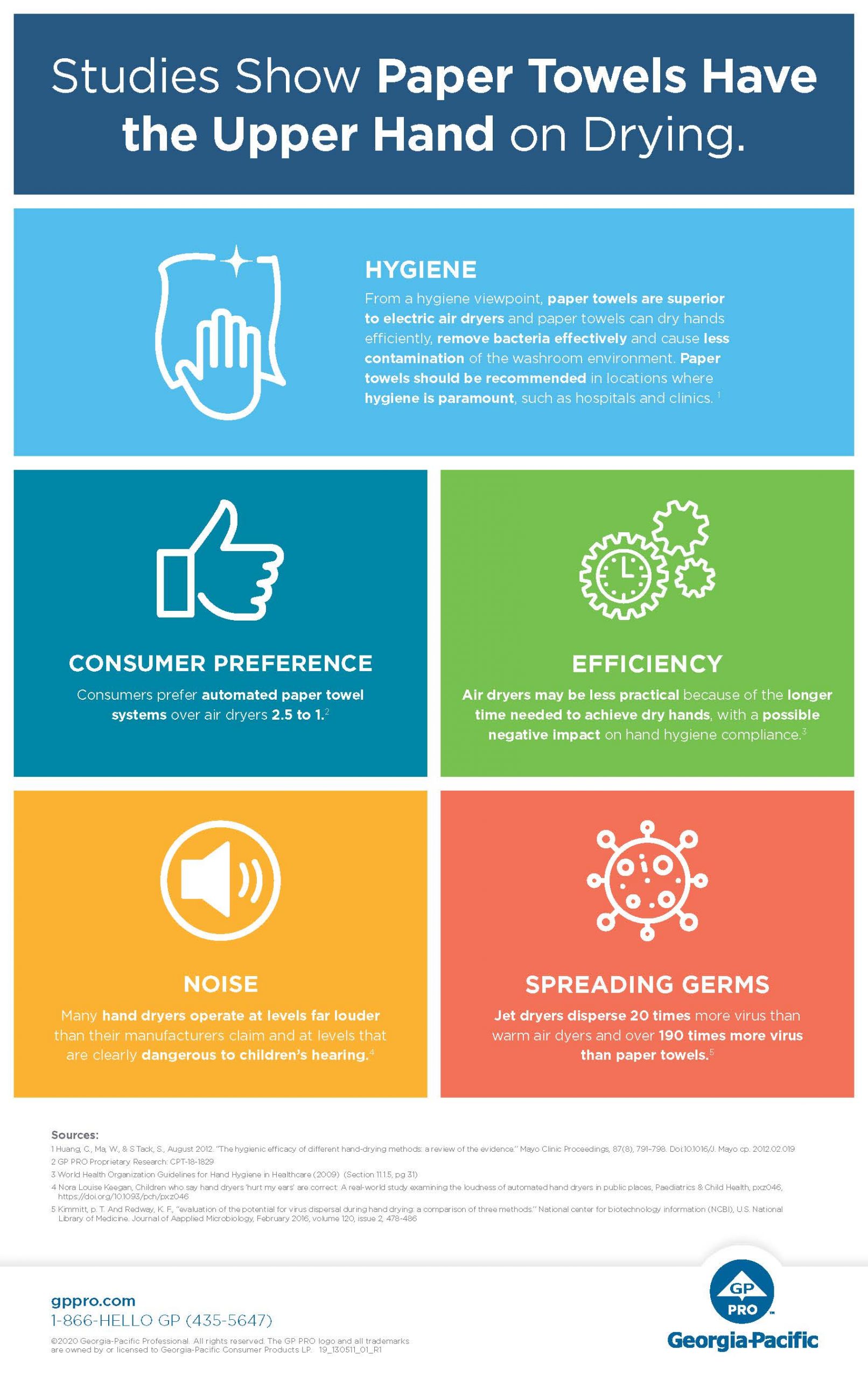Now more than ever, proper hand hygiene is no longer an option – it is a responsibility.
Recent world events have magnified the importance of restaurants enforcing proper hand hygiene at their locations. With so many touchpoints throughout an operation, following the correct hygiene procedures can help ensure the health and safety of both your patrons and your staff.
Additionally, hygiene and cleanliness in food service operations can shape patron perceptions 1.
A recent study revealed that customers will continue to be concerned about hygiene following the COVID-19 pandemic, especially in areas like restrooms and back of house 1.
While using the right soaps and hand products are a big part of the hygiene process, it’s equally as important to focus on the steps you follow after washing. The proper hand drying products helps maximize sanitation while helping to reduce the risk of spreading germs.
Air Dryers vs Paper Towels
Two of the most popular hand-drying solutions for restaurants include traditional restroom paper towels and bathroom air dryers. While both products can be effective for drying, paper towels have the upper hand regarding sanitation and efficiency.
Still not convinced?
Here are 5 reasons why you should switch to restroom paper towels from bathroom air dryers.
From a hygiene viewpoint, paper towels are superior to electric air dryers and paper towels can dry hands efficiently, remove bacteria effectively and cause less contamination of the washroom environment.
Use of paper towels is especially important in facilities where hygiene is most critical, such as hospitals and health clinics 2. But really, anywhere people need to turn off faucets or dry their hands after washing them, paper towels are preferred 3.
This one’s easy! Consumers prefer automated paper towel systems over air dryers 2.5 to 1 3. Can’t beat those stats!
Air dryers may be less practical because of the longer time needed to achieve dry hands, with a possible negative impact on hand hygiene compliance.
Because it takes longer for people to achieve dry hands from an air dryer, many may dry their hands ineffectively when using them. This could lead to a possible negative impact on hand hygiene compliance 4.
One thing that goes without question – bathroom air dryers are noisy.
Many hand dryers operate at levels far louder than their manufacturers claim and at levels that are clearly dangerous to children’s hearing 5.
Restroom paper towels are a great option to alleviate the excess noise.
Air dryers spread germs.
Jet dryers disperse 20 times more virus than warm air dryers and over 190 times more virus than paper towels 6.

So, when it comes to drying hands, it’s easy to see why restroom paper towels are the “clean” winner.
Manufacturers like GP PRO (Georgia-Pacific) provide several great options of touchless paper towel dispensers. Products like the enMotion® Paper Towel System and the Pacific Blue Ultra™ Paper Towel System offer operators convenience and hygienic benefits for their restaurants. Both are easy to use and easy to maintain while helping to minimize waste.
Best of all? Consolidated Concepts clients can access these and more products from Georgia-Pacific at competitive pricing!
Contact Us!
Interested in learning more? Contact us today to add Georgia-Pacific paper towel dispensers to your operation, or to learn more about ways Consolidated Concepts can help your operation.
References
- GP Topline Trends PDF
- Huang, C., Ma, W. and Stack, S. (2012) “The hygienic efficacy of different hand-drying methods: A review of the evidence”. Mayo Clinic Proceedings, Vol. 87 No. 8, pp. 791-798
- GP PRO Proprietary Research: CPT-18-1829
- World Health Organization Guidelines for Hand Hygiene in Healthcare (2009) (Section 11.1.5, pg 31)
- Nora Louise Keegan, Children who say hand dryers ‘hurt my ears’ are correct: A real-world study examining the loudness of automated hand dryers in public places, Paediatrics & Child Health, pxz046, https://doi.org/10.1093/pch/pxz046
- Kimmitt, p. T. And Redway, K. F., “evaluation of the potential for virus dispersal during hand drying: a comparison of three methods.” National center for biotechnology information (NCBI), U.S. National Library of Medicine. Journal of Applied Microbiology, February 2016, volume 120, issue 2, 478-486








